The transition between the Dark Ages and the Romanesque era happened around 1000 A.D. Romanesque Artworks were produced all around Europe during this phase of the Middle Ages.
The exact moment that the transition between Romanesque art and Gothic art happened remains a bit obscure. Gothic art emerged in northern France in the 12th century.
It subsequently spread to all of Western Europe and Central and Southern Europe as well and culminated in the development of international Gothic in the 14th century.
The first Gothic artworks to be produced were sculptures that decorated medieval churches and abbeys. As you surely expected, these mainly depicted idealized Biblical stories and figures.
Gothic artists also produced stained glass windows, frescoes, manuscripts, prints, and panel paintings that served as altarpieces.
The shift towards the naturalistic artworks produced by Renaissance artists happened in the early 15th century, although Late Gothic art continued to be produced until the 16th century in Germany.
In this article, we take a closer look at some of the most famous Gothic artworks so you can learn all about this medieval art movement.
1. Rucellai Madonna – Duccio
The Rucellai Madonna is the title of a huge panel painting by Italian artist Duccio di Buoninsegna (1255-1319). He was the leading painter in Siena at the time although he worked in various other cities in Italy as well. He probably completed this painting between 1285 and 1286.
It was commissioned by the Compagnia dei Laudesi, a confraternity that wanted to decorate their chapel in the church of Santa Maria Novella in Florence. The contract was signed on April 14, 1285, which makes it the oldest of its kind in Italy. The painting is huge with dimensions of 450 × 290 centimeters (180 × 110 inches) and is part of the collection of the Uffizi Gallery in Florence today.

2. Scepter of Charles V – Hennequin du Vivier

The Scepter of Charles V is also known as the Scepter of Charlemagne, a reference to the first King who owned this piece of regalia. It’s considered to be one of the most important relics of the Kingdom of France and was completed in the 1370s by the court goldsmith named Hennequin du Vivier.
The scepter consists of 4 different elements, including the shaft, a bulb, and a fleur-de-lis. The most amazing feature is the seated figure of Charlemagne, the first Holy Roman Emperor in the early 9th century, on top. The painting titled Napoleon I on His Imperial Throne depicts this scepter and it has been part of the collection of the Louvre Museum since 1793.
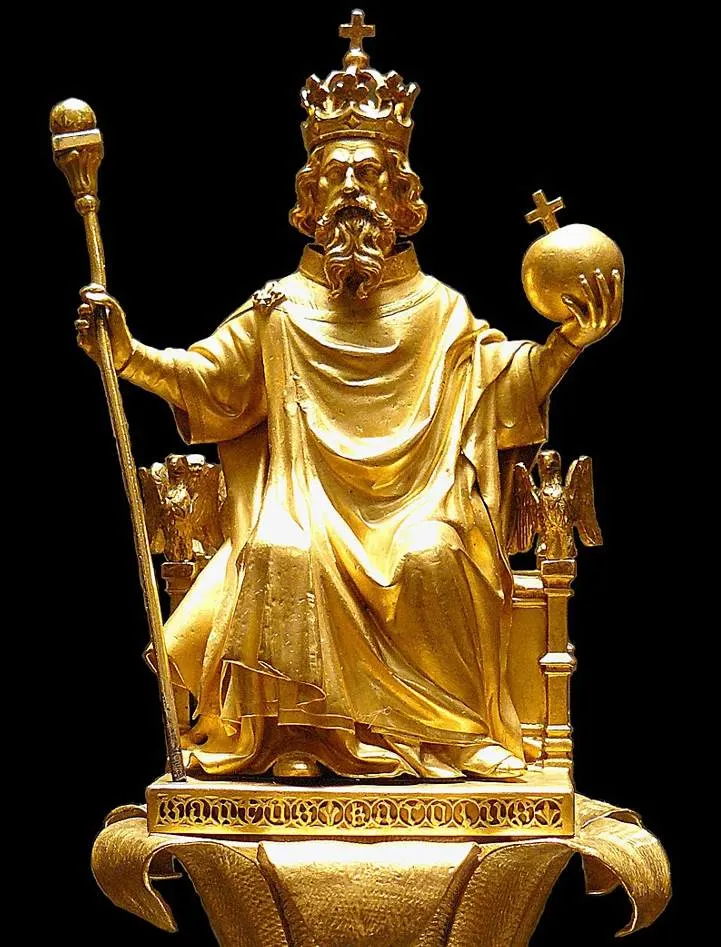
3. Wilton Diptych
The Wilton Diptych is one of the most unique Gothic artworks ever produced. It was commissioned by King Richard II of England in the late 14th century and completed between 1395 and 1399. It’s one of the only religious panel paintings that was completed in England during the Gothic period to have survived.
The work consists of two hinged panels, one depicting King Richard II who is kneeling, and the other depicting the Virgin Mary and her infant Jesus Christ accompanied by angles. It’s a type of donor portrait that became very popular during the early Renaissance. Many paintings by Jan van Eyck emphasize this. Today, the painting is part of the collection of the National Gallery in London.

4. Royal Portal of Chartres Cathedral
Chartres Cathedral is a magnificent Gotic Cathedral of which construction started in the early 12th century. Although the church was started as a Romanesque building, a fire flattened most parts of the church in the year 1194 after which the building was redesigned using the Gothic style.
The West Portal of Chartres Cathedral, also known as the Royal Portal, is one of the few elements that survived this devastating fire. It features 3 tympana that were magnificently carved by French sculptors. They depict scenes from the Old Testament and the central tympanum features Jesus Christ sitting on a throne.
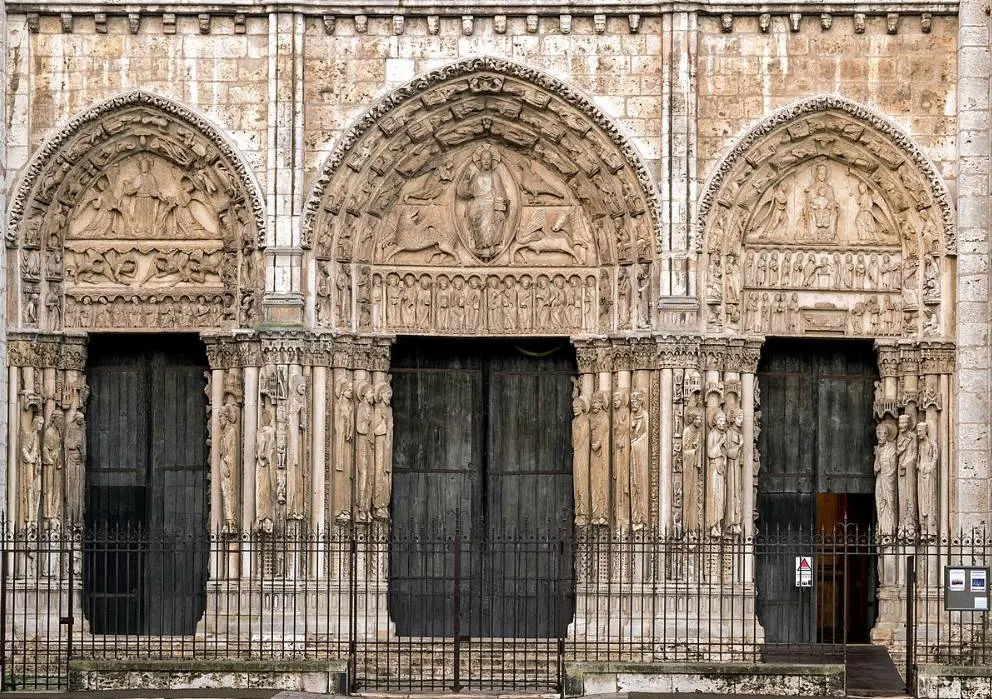
5. Well of Moses – Claus Sluter
The Well of Moses is a magnificent sculpture that was created by a Dutch artist named Claus Sluter (1340-1406) between 1395 and 1403. He had the help of his nephew Claus de Werve and it’s considered to be the artist’s Magnum Opus. It’s located just outside of the French city of Dijon, the capital city of the Burgundy region in northeastern France.
The sculpture was commissioned by the Burgundian Duke Philip the Bold (1342-1404) who wanted it to become his burial site. It was part of the Chartreuse de Champmol, a Carthusian monastery that was demolished during the French Revolution. This monumental work of art was preserved and is a perfect example of International Gothic which integrates northern realism.
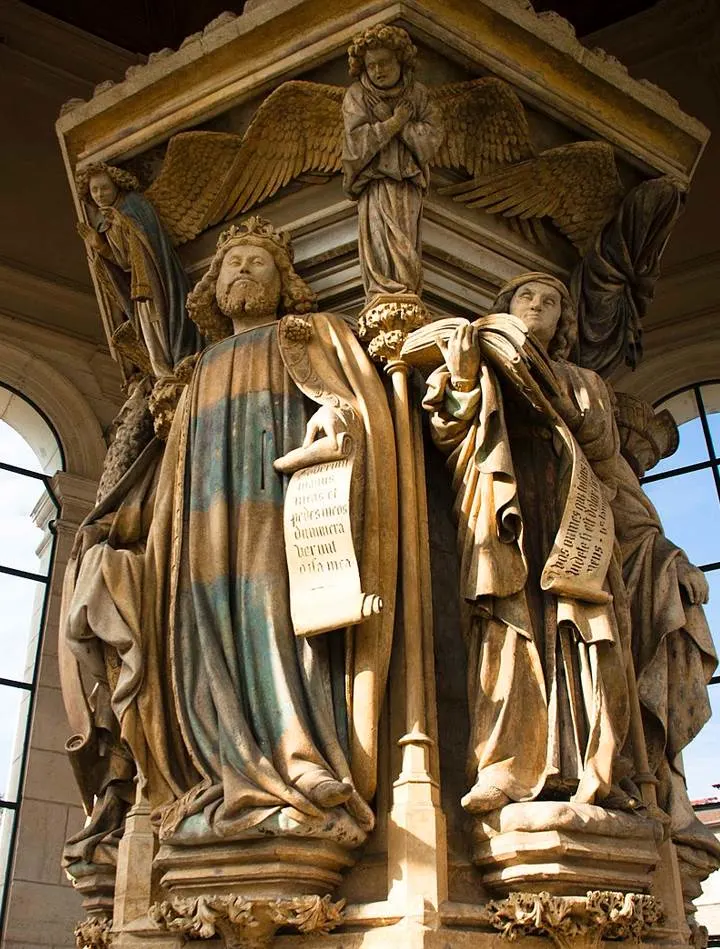
6. Ognissanti Madonna – Giotto
Ognissanti Madonna is also known as “Madonna Enthroned” and is a painting by Italian Gothic artist Giotto di Bondone (1267-1337). It depicts the traditional subject of the Virgin Mary sitting on a throne with her baby Jesus Christ on her lap while being surrounded by angels. It’s part of the collection of the Uffizi Gallery in Florence.
It’s a painting that incorporates a sense of realism that became more dominant in Renaissance paintings. It’s therefore seen as an important work in the transition between Gothic and Renaissance art. It’s another large painting with dimensions of 325 × 204 centimeters (128 × 80 inches) and although it’s not dated, art historians believe it was completed around 1310.

7. Casket with Scenes of Romances
Casket with Scenes of Romances is the self-explanatory title of an ivory casket that was created between 1330 and 1350. It’s a French work that was completed in Paris and it’s relatively small with dimensions of 11.8 (high) × 25.2 (wide) × 12.9 (deep) centimeters (4.62 x 9.93 x 5.06 inches).
It’s one of the few surviving French Gothic ivory caskets that depict various romantic scenes from stories derived from contemporary literature. The original casket is part of the collection of the Walters Art Museum in Baltimore, but there are a total of 8 replicas in museums around the world.
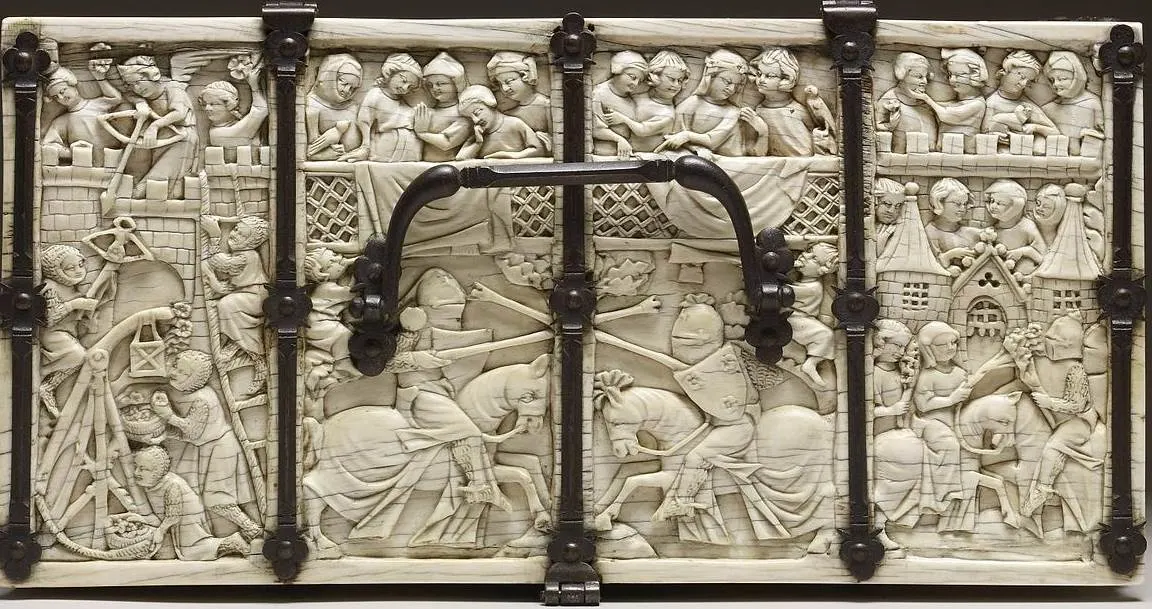
8. Madonna and Child – Duccio
Madonna and Child is another painting by Duccio di Buoninsegna which was probably completed around 1300. It’s a very small work of art with dimensions of just 27.9 × 21 centimeters (11 × 8.3 inches) and it’s part of the collection of the Metropolitan Museum of Art in New York City.
The size of the painting makes us assume that it was commissioned as a small devotional work. This theory is strengthened by the fact that the lower part of the frame was partially burned by the candles that once stood below it. This influential work of art is remarkable because baby Jesus appears to be playing with his mother’s veil. She looks sad because she knows will sacrifice himself for mankind in the future.
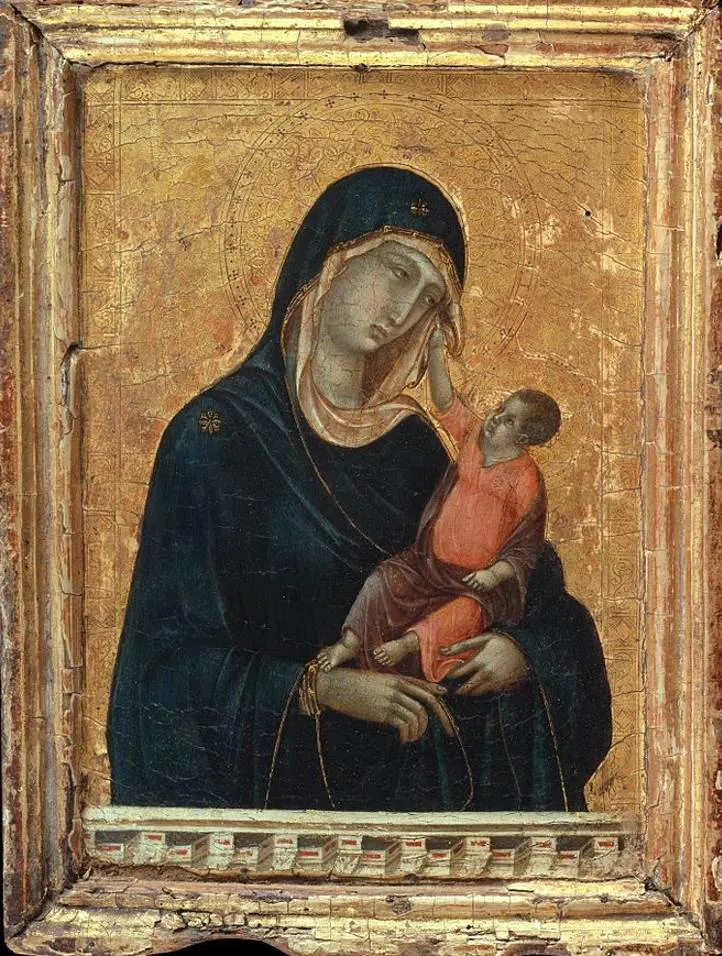
9. Annunciation – Simone Martini and Lippo Memmi
Annunciation is also known by its full title “Annunciation with St. Margaret and St. Ansanus.” It was a painting completed as a collaboration of two Gothic artists named Simone Martini (1284- 1344) and Lippo Memmi (1291-1356) and it was completed around 1333.
It was originally commissioned to decorate the side altar of Siena Cathedral. That’s why it’s a rather large painting with dimensions of 305 × 265 centimeters (120 × 104 inches). It’s considered to be one of the most amazing Gothic artworks ever produced due to the quality of the depicted elements and figures.
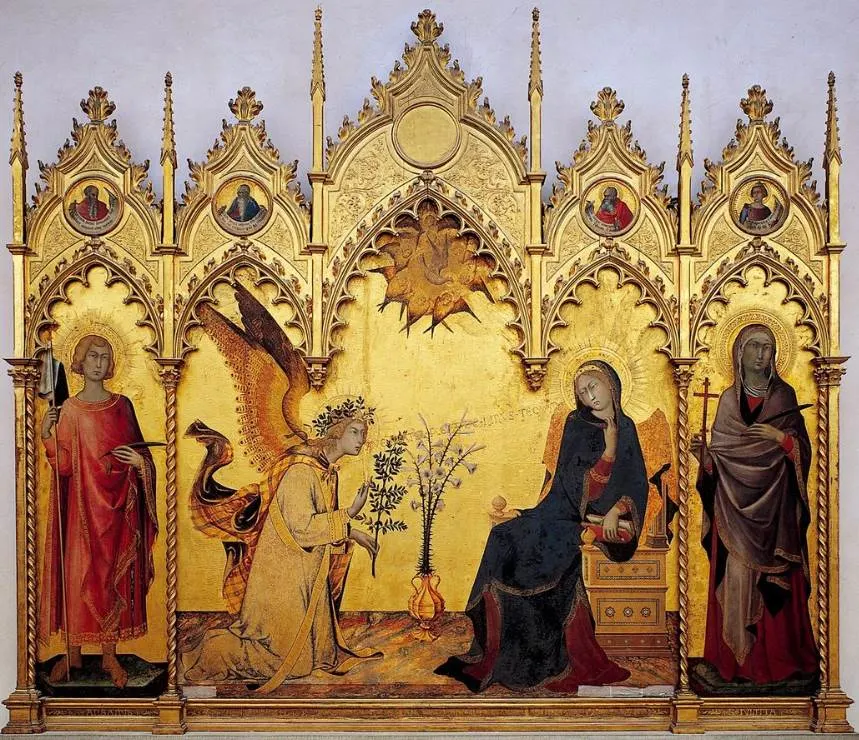
10. Sainte Chapelle Stained Glass Windows
Sainte Chapelle is one of the many amazing churches in Paris. It originally served as the royal chapel of the medieval Palais de la Cité on the Île de la Cité in the heart of the city. The amazing Gothic architecture and stained glass windows make this one of the most amazing buildings of the Gothic period.
There are a total of 15 stained glass windows that decorate the nave and apse of the Upper Chapel of Sainte Chapelle. Many of these were completed and put in place between 1242 and 1248 and they depict scenes from the Old and New Testaments. These are without a doubt some of the most amazing Gothic artworks ever produced.

